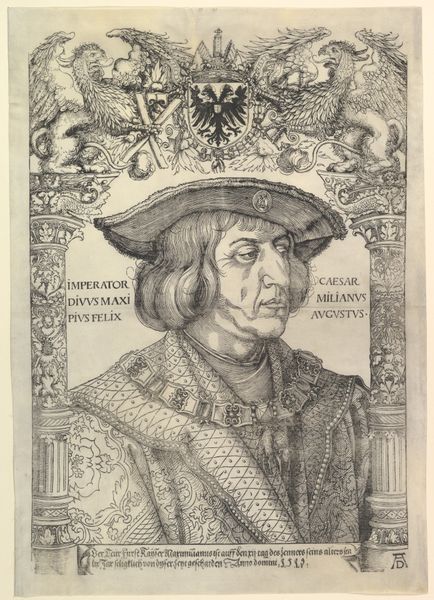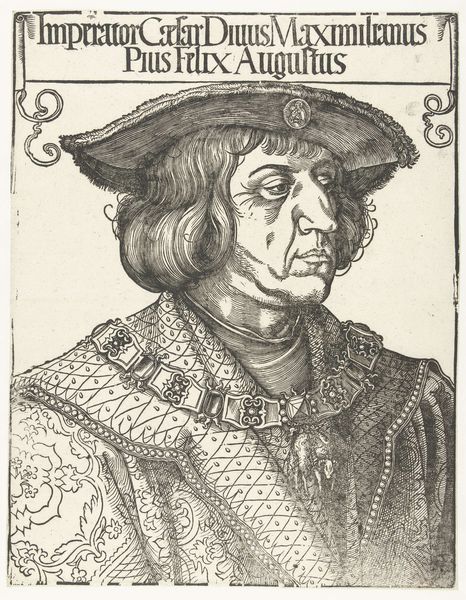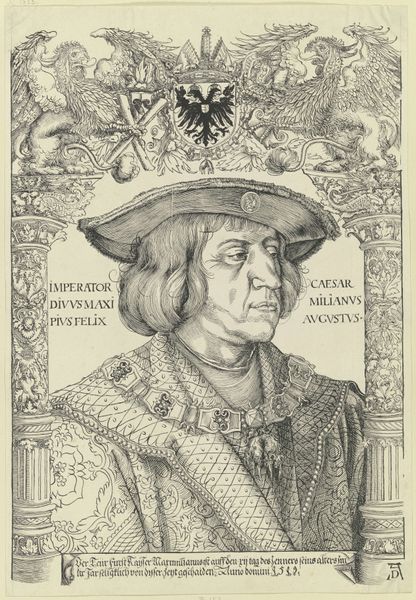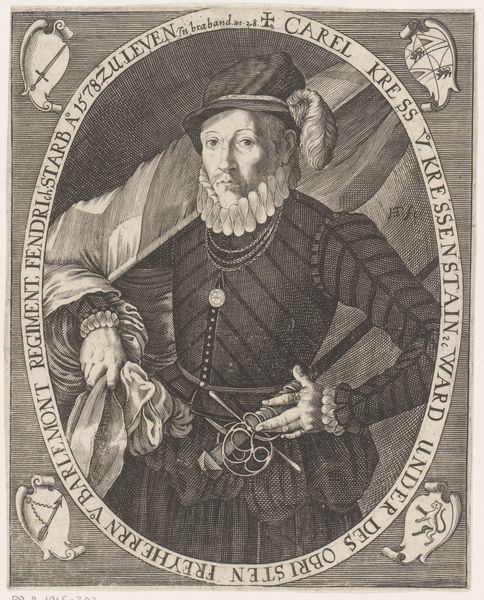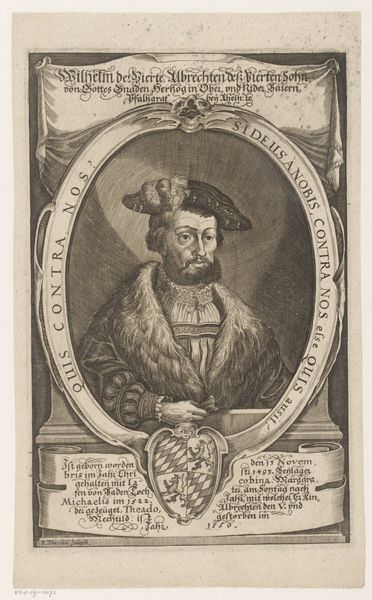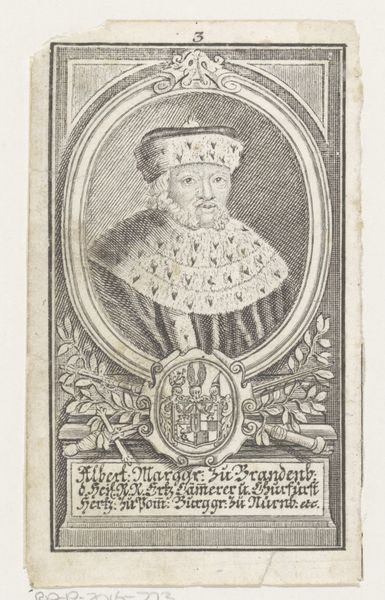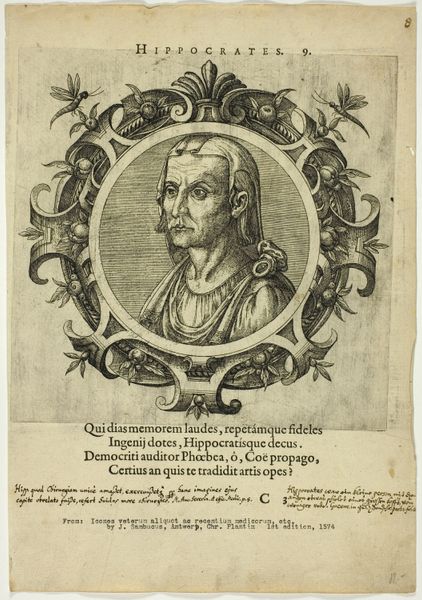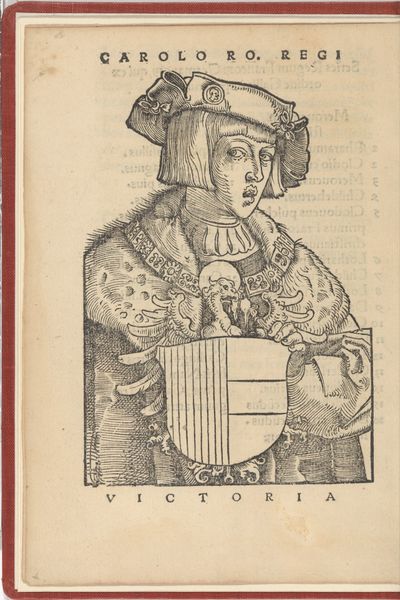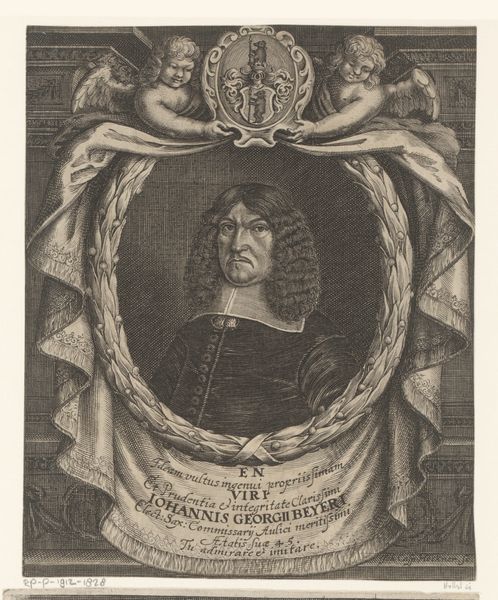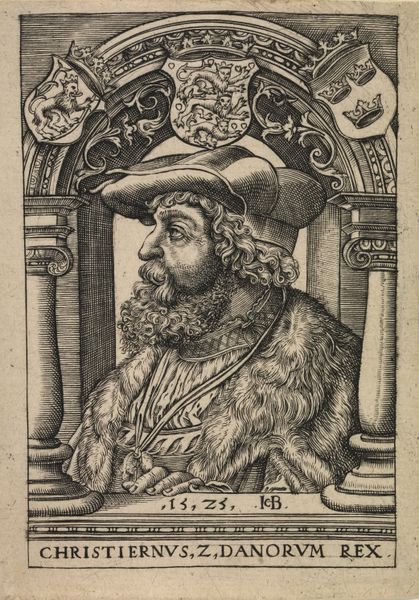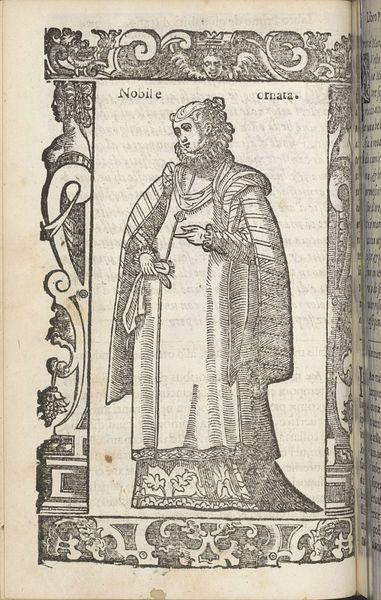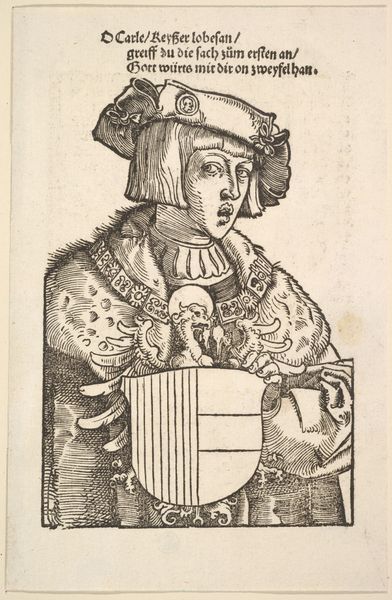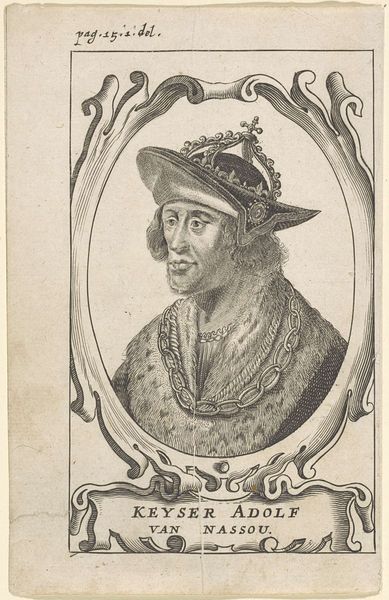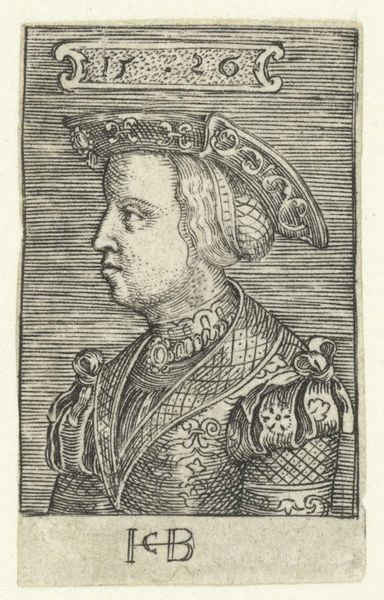
drawing, print
#
portrait
#
drawing
#
comic strip sketch
#
pen drawing
#
mechanical pen drawing
# print
#
pen illustration
#
pen sketch
#
old engraving style
#
personal sketchbook
#
pen-ink sketch
#
men
#
pen work
#
sketchbook drawing
#
arm
Dimensions: Sheet: 12 1/16 x 7 in. (30.6 x 17.8 cm)
Copyright: Public Domain
Curator: Here we have a “Copy of Portrait of Charles V” dating from 1485 to 1531, a work attributed to Hans Weiditz the Younger, presently residing at The Metropolitan Museum of Art. It appears to be an old print of some kind. What’s catching your eye? Editor: Initially, I’m struck by the rather formal arrangement of symbols and emblems dominating the space above the figure’s head. They loom over Charles V, conveying a sense of inherited power and dynastic continuity, quite literally overshadowing his presence. Curator: It's executed using a drawing technique—specifically, with pen and ink. Weiditz was quite skilled at utilizing these simple materials to convey intricate detail, emulating a traditional engraving style. Editor: Exactly, there's a weight of historical symbolism present here! Note the crowned shields, the double-headed eagle – instantly recognizable iconography related to the Holy Roman Empire, projecting imperial ambition and legitimacy. Curator: It certainly projects power, and I find it interesting to consider the means of its dissemination. As a print, it could be relatively easily reproduced and distributed, becoming a tool for propagating a carefully constructed image of Charles V throughout his vast territories. Editor: You’re right, and notice the gesture of Charles V's hand holding a golden orb! It's so understated. The symbolism speaks to a sophisticated understanding of how images function as propaganda, as it still manages to subtly project power and authority. Curator: Consider too the physical act of production; the repetitive labor of carving the lines into the woodblock, the access to paper, and ink which at that time would be tied to specific networks of commerce and skill sharing, each of those steps involving artisans, merchants, and networks that enabled such objects to proliferate. Editor: A fascinating point. Looking closer, I’m wondering about the meaning "Noch I I Weiter" appearing at the top; I think it points towards the weight of this historic position. Almost implying that "there are still more to come". Curator: So while we look at this work, a portrait seemingly focused on singular status and rulership, we are also faced with understanding how materials and skill-based production made political self-representation possible. Editor: Indeed. This artwork reveals the interwoven nature of symbolism and politics in crafting identity. Curator: Thank you; the context here provides for a reading of more than the iconic figure suggests.
Comments
No comments
Be the first to comment and join the conversation on the ultimate creative platform.
